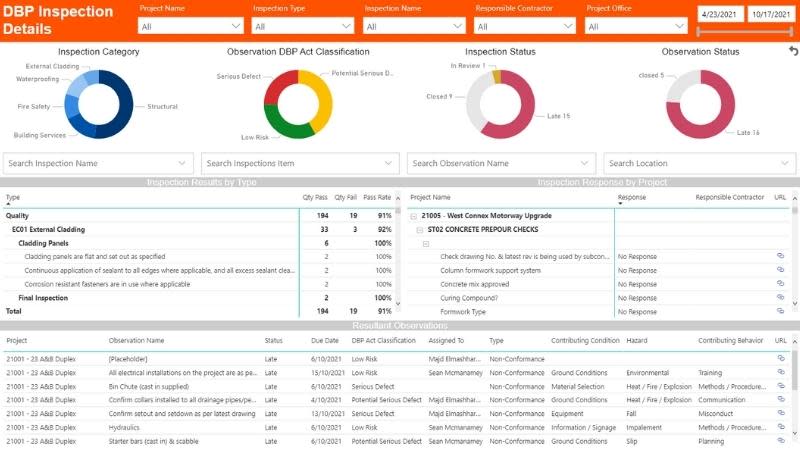Quality in construction is a national issue. Consumers, financiers, insurers and regulators have lost trust in the industry.
A number of high profile building failures around the world have now shone a national spotlight on safety and compliance and highlight the need for better protection for consumers.
The current landscape
These global concerns with safety coupled with greater innovation in technology create the need for tools to maintain and document compliance and quality performance.
Pen and paper once graduated to spreadsheets but not even Excel will cut the mustard now.
In order to navigate today’s increasing regulations and keep quality a priority, developers are investing in full-service packages to maintain standards.
These services can proactively address problems as they arise, use historical data to generate business insights and minimise some incredible risks faced throughout a project’s life cycle.
What are the greatest risks?
Beyond the obvious safety of your workers and occupants, the greatest risk faced with poorly tracked compliance, is rework. Rework takes up an average of 12 per cent of project budget in Australia, according to the Procore, How We Build Now Report, 2022.
That’s no insignificant cost to your business, and many of them are avoidable. Some of the most common mistakes leading to defects are:
With the right digital risk management strategy and processes in place, the quality of your builds can increase and much of that rework time can instead be spent on doing work that adds to your profit margin.
“Rework continues to impact businesses of all sizes—and rework is closely linked with building quality,” PBS Building’s chief operating officer, Matthew Rayment, said.
“Communication, consultation and coordination [are needed] to ensure we don’t have to go back and fix defects.”
It’s not surprising that digital adoption will then increase the quality of build.
A solution to risk mitigation
So what if you actually could automate dashboards that show project health? What if you could increase your ability to predict risks and defects? What if you could generate a single source of truth so everyone stays on the same page without the need for ad hoc reports?
By strengthening quality assurance with a digitised solution, you can better align your quality standards, cut through compliance complexities, gain auditing support and prove it to your stakeholders.
Tech solutions are becoming overwhelmingly popular, with 45 per cent of businesses using a specialist software to manage quality assurance, the How We Build Now Report revealed.
▲ The dashboard solution reveals trends across multiple projects, allowing better informed business decisions.
The Quality Essentials dashboard
Procore helps solve it with Quality Essentials and Analytics, which is a dashboard solution providing compliance tracking.
Dashboards show visibility over how not only one project is tracking, but also trends across multiple projects to help identify leading and lagging indicators, allowing early identification of risks or problems, and informed business decisions.
With 29 per cent of Australian construction leaders concerned with keeping up with regulatory changes, a digital solution such as this can help keep your finger on the pulse as to what is happening on your project as well as utilise the pre-built inspection templates that cover five primary building elements:
Fire safety systems
Waterproofing systems
Structural
External cladding
Building services
In a climate where builders and developers need to re-establish trust, minimise rework and focus on increasing profit margins, digital adoption—through the Quality Essentials dashboard—is key.
It can turn paper-based, antiquated records into a single source of truth, streamlining compliance and ultimately improving consumer safety.
Book a demo and learn more about Quality Essentials today.
The Urban Developer is proud to partner with Procore to deliver this article to you. In doing so, we can continue to publish our daily news, information, insights and opinion to you, our valued readers.






![[+] Greenfield dilemma](/_next/image?url=https%3A%2F%2Fimages.ctfassets.net%2F8pr762qjocl3%2FZlsFAa3UgYnS2GAllGpu9%2F873fa518f16ef970101830950ad2def6%2F____greenfield_dilemma_WEB.jpg%3Fw%3D743&w=3840&q=75)


